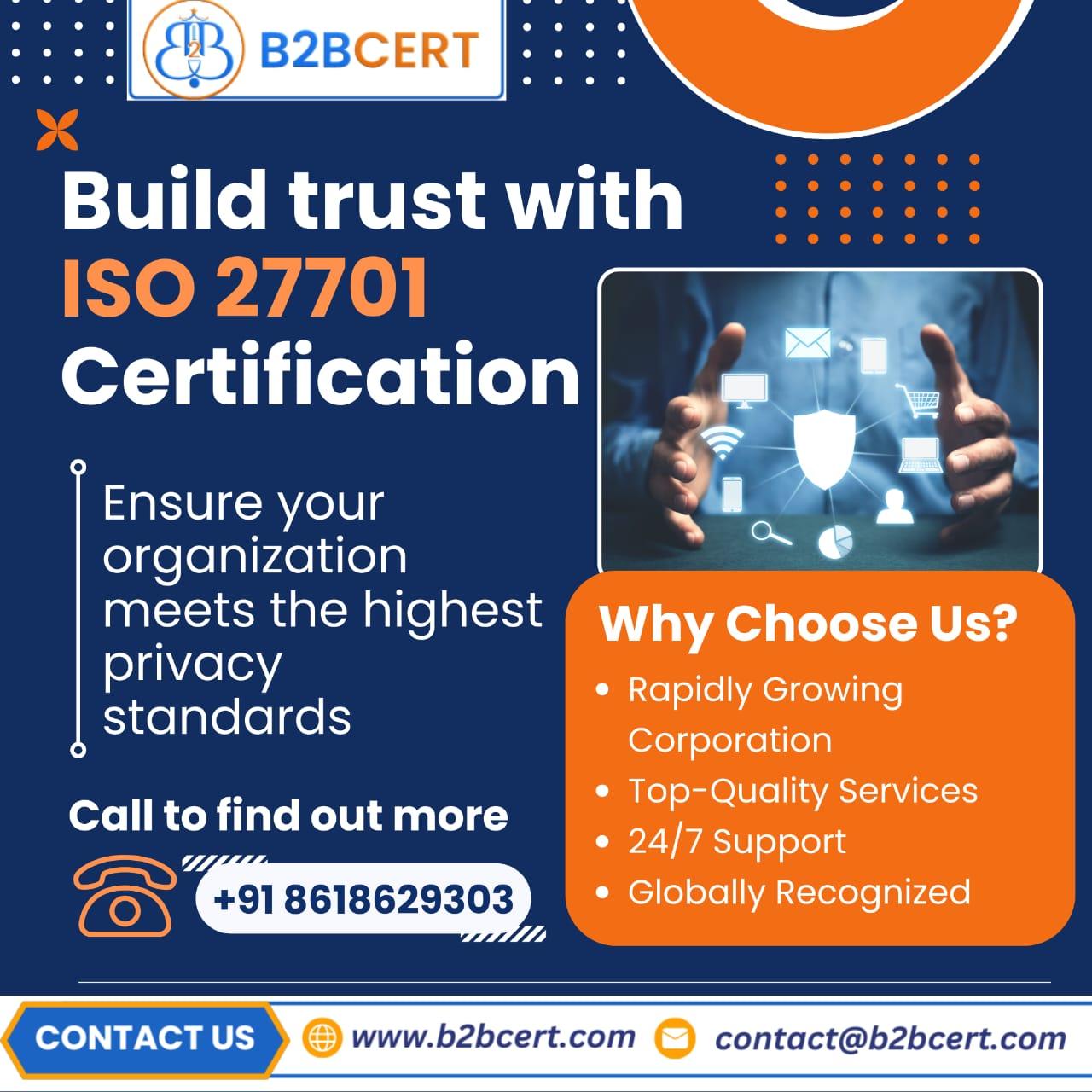How is the Statement of Applicability (SOA) Related to ISO 27701 Risk Assessments?

When implementing a Privacy Information Management System (PIMS) under ISO 27701, one of the most critical documents to develop and maintain is the Statement of Applicability (SOA). The SOA acts as a bridge between the risk assessment process and the actual controls implemented to manage those risks. It ensures that every identified privacy risk has a corresponding control measure, thereby aligning the privacy management framework with organizational objectives and compliance obligations.
Organizations pursuing ISO 27701 Certification in Bangalore often find the SOA to be the central document that connects risk management with operational privacy controls. To understand this relationship, it’s essential to explore how risk assessments drive the SOA’s content and why both play an integral role in achieving compliance and maintaining trust in personal data processing.
Understanding the Statement of Applicability (SOA)
The Statement of Applicability is a formal document that lists all the controls an organization has implemented or excluded from the Annex A (of ISO 27001) and the additional privacy-specific controls in ISO 27701. It serves several purposes:
-
It identifies applicable controls for managing information security and privacy risks.
-
It justifies the inclusion or exclusion of each control.
-
It demonstrates compliance with legal, contractual, and regulatory requirements.
-
It provides transparency for auditors and stakeholders.
In the context of ISO 27701, which extends ISO 27001 to include data privacy, the SOA becomes a dual-purpose document addressing both information security and privacy controls. This extension ensures that organizations can systematically manage Personally Identifiable Information (PII) risks while maintaining robust data protection frameworks.
The Role of Risk Assessment in ISO 27701
A risk assessment is the foundation of ISO 27701’s implementation. It involves identifying, evaluating, and prioritizing risks to personal data. This process helps organizations determine:
-
What personal data is processed and for what purpose.
-
The potential threats and vulnerabilities associated with data processing.
-
The impact of these threats on data subjects’ privacy.
-
The likelihood of occurrence and severity of the impact.
Based on this assessment, the organization can decide what controls to implement to mitigate identified risks. For instance, if a risk assessment reveals that unauthorized access to personal data could occur due to weak authentication, the organization might implement multi-factor authentication as a control.
ISO 27701 Consultants in Bangalore emphasize that an effective risk assessment should consider both security and privacy risks, as privacy extends beyond the traditional boundaries of information security. It also considers compliance risks, data subject rights, and data lifecycle management.
Linking SOA with ISO 27701 Risk Assessments
The SOA is directly derived from the results of the organization’s risk assessment. Every control listed in the SOA should have a clear link to one or more identified risks. This relationship ensures that the controls are not implemented arbitrarily but are based on specific, assessed risks.
Here’s how the linkage works:
-
Risk Identification:
The organization identifies privacy-related risks such as data breaches, unauthorized disclosures, or misuse of personal data. -
Risk Evaluation:
The impact and likelihood of these risks are analyzed to prioritize mitigation efforts. -
Control Selection:
Based on the risk evaluation, relevant controls from ISO 27001 Annex A and ISO 27701 Annexes A and B are selected. -
SOA Documentation:
These selected controls are recorded in the SOA, with justification for inclusion or exclusion and a reference to the corresponding risk. -
Implementation and Review:
Once controls are implemented, the SOA serves as a reference point for audits, internal reviews, and continuous improvement.
In essence, the SOA functions as a risk treatment record, demonstrating how privacy and security controls have been chosen and applied in response to the organization’s unique risk landscape.
Benefits of Integrating SOA and Risk Assessment
The close relationship between risk assessment and the SOA offers several key benefits for organizations seeking ISO 27701 Certification in Bangalore:
-
Transparency and Accountability:
The SOA provides a clear audit trail linking risks to controls, ensuring that the organization’s privacy measures are justified and verifiable. -
Efficient Resource Allocation:
By basing control selection on risk assessments, organizations can prioritize efforts on high-impact areas instead of spreading resources thinly across low-priority risks. -
Compliance Confidence:
The documented connection between identified risks and applied controls helps demonstrate compliance with legal and regulatory requirements such as GDPR, ensuring that privacy measures are both appropriate and effective. -
Continuous Improvement:
As privacy risks evolve due to new technologies or business processes, organizations can update their risk assessment and SOA to remain aligned with emerging threats.
Role of ISO 27701 Consultants in Bangalore
Engaging experienced ISO 27701 Consultants in Bangalore can significantly simplify the process of developing a risk-based SOA. These consultants assist in:
-
Conducting detailed privacy impact assessments.
-
Mapping risks to relevant ISO 27701 and ISO 27001 controls.
-
Preparing a compliant and audit-ready Statement of Applicability.
-
Training teams on privacy risk management and SOA maintenance.
-
Guiding the organization through the certification process.
By leveraging professional ISO 27701 Services in Bangalore, organizations can ensure that their SOA is not just a document for compliance but a strategic tool for privacy governance and data protection.
Conclusion
The Statement of Applicability (SOA) and risk assessments under ISO 27701 are intrinsically linked. The risk assessment identifies where privacy threats exist, and the SOA documents how those risks are mitigated through selected controls. Together, they create a transparent, defensible, and effective privacy management framework.
For organizations in Bangalore aiming to strengthen their privacy posture and achieve ISO 27701 Certification in Bangalore, understanding and properly aligning these two elements is crucial. With expert guidance from ISO 27701 Consultants in Bangalore and tailored ISO 27701 Services in Bangalore, companies can not only meet certification requirements but also build lasting trust with customers and stakeholders through robust privacy management practices.






